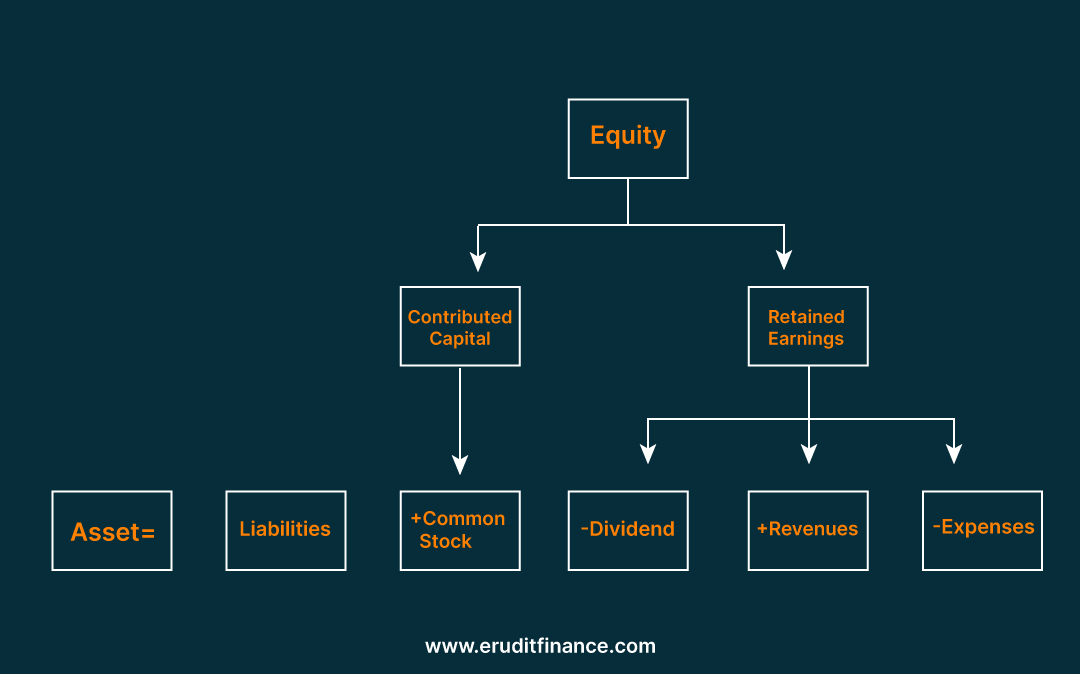Introduction
Get a Detailed article on What is Retained Earnings, It represents the cumulative sum of a company’s profits that are reinvested in the business rather than distributed as dividends to shareholders. It reflects the portion of net income retained for future growth, debt reduction, or operational needs. As a key component of shareholders’ equity on the balance sheet, retained earnings demonstrate a company’s ability to generate profits and sustain long-term financial health. Monitoring changes in retained earnings over time provides insights into a company’s profitability, financial stability, and capacity to fund internal initiatives without relying on external financing.
What Is Retained Earnings With Example?

Retained earnings are the accumulated profits of a company that are not distributed to shareholders as dividends, but instead, are reinvested back into the business to facilitate growth and expansion. This financial metric plays a crucial role in the financial health of a company and is often considered an indicator of its long-term sustainability.
What Is Retained Earnings vs Profit?
Any business owner, investor, or accountant should be aware of the distinction between retained earnings and profit. Both expressions refer to a company’s financial performance, although they mean different things in various contexts. This article will discuss retained earnings, profit, and its definitions, calculations, and significance.
| Retained Earnings | Profit | |
| Definition | Represents the accumulated profits a company has kept over time, not distributed as dividends. | The financial gain earned by a business during a specific period, before any deductions or distributions. |
| Purpose | Used for reinvestment in the business, debt reduction, or covering future operational needs. | A measure of short-term financial performance and potential for dividends. |
| Timing | Accumulates over multiple accounting periods. | Calculated for a specific accounting period. |
| Visibility | Shown on the balance sheet under shareholders’ equity. | Appears on the income statement. |
| Usage | Reflects a company’s retained financial strength for long-term stability. | Indicates immediate financial performance. |
Understanding the distinction between retained earnings and profit is crucial for assessing a company’s financial health, stability, and strategic use of earnings over time.
How Do I Calculate Retained Earnings?
The Retained Earnings Calculation Formula
Retained earnings are calculated using a simple formula. Dividends given to shareholders are subtracted from the company’s net income to arrive at retained earnings. It is denoted mathematically as follows:
Net income minus dividends paid equals retained earnings.
Let’s use an example to show how this computation is done. Let’s say a business had a net income of $100,000 over a specific time, and it distributed $20,000 in dividends to its shareholders. Its retained earnings can be determined using the following formula:
$100,000 minus $20,000 equals retained earnings.
Earnings Retained = $80,000
Consequently, $80,000 would represent the company’s retained earnings for that time frame.
What Is the Difference Between Retained Earnings and Equity?
|
Nature and Source of Funds |
The part of profits that a firm decides to reinvest or keep for internal use is known as retained earnings. These funds are produced by the business operations and gradually amassed. Equity, on the other hand, is the ownership stake held by shareholders and represents their initial investments and earnings through time. |
| Purpose and Usage | Retained earnings are primarily employed to meet a company’s operating, growth, and expansion goals. They can be used for acquisitions, debt payments, research, and development, or as a safety net during economic downturns. Contrarily, equity acts as a measure of ownership and is crucial for luring investors and preserving financial stability. |
| Financial Statement Presentation | Retained earnings are a distinct line item inside the shareholders’ equity portion of financial statements. It displays the total profits the business has kept since its founding. Contrarily, equity includes a range of elements including contributed capital, retained earnings, additional paid-in capital, and other comprehensive income. It offers a thorough analysis of the shareholders’ ownership stake in the business. |
Can Retained Earnings Be Negative?
Retained earnings can indeed be in the negative. Retained earnings are a company’s total profits or losses that have not yet been paid out as dividends to shareholders. A company’s retained earnings may go negative if it continuously experiences net losses or pays out more dividends than it receives in profits.

A corporation with negative retained earnings has either paid out more dividends than it has earned throughout its history or has experienced more losses than profits. It signifies that a deficit in the retained earnings account has been caused by the company’s financial performance.
Several factors, including ongoing losses, write-offs, poor money management, or aggressive payout programs, can result in negative retained earnings. It’s crucial to understand that a company’s financial situation may be affected by negative retained earnings.
What Is the Difference Between Reserves and Retained Earnings?
While both reserves and retained earnings contribute to a company’s financial well-being, there are some fundamental differences between them. Let’s highlight the key distinctions:
- Purpose: Retained earnings are put back into the business to support development and expansion, whereas reserves are set aside for specific objectives like risk management or potential investments.
- Voluntary vs. Mandatory: Based on their policies and strategies, businesses voluntarily generate reserves. Retained earnings, on the other hand, come about naturally as a result of business activities and are accumulated over time without any intentional effort.
- Distribution: Dividends to shareholders are not given from reserves. They are kept on file by the business for potential use later. On the other hand, if the management of the company chooses to do so, retained earnings may be paid as dividends to shareholders.
- Source of Funds: While retained earnings are earned from the surplus of revenues over expenses, reserves are often supported by the company’s profits.
- Flexibility: Reserves, which can be used for a variety of things, allow greater flexibility in their use. On the other hand, retained earnings are typically used for business reinvestment.
Frequently Asked Questions(FAQs):
Are Retained Earnings Taxable?
Retained earnings typically aren’t subject to immediate taxation when it comes to taxes. This is because they were already liable to corporate income tax at the time of their earning. Net income, which includes dispersed dividends and retained earnings, is subject to corporate income tax. Retained earnings have so already been subject to corporate tax.
What Are the Names of Retained Earnings?
No, there are no special names for the concept of retained earnings. Retained earnings refer to the idea of cumulative profits as a whole that is put back into the company.
What Are the Three Types of Retained Earnings?
- Revenue Retained Earning
- Capital Retained Earning
- Surplus Retained Earning
Closing Up
Hopefully, You understand all the points of What is Retained earnings. We have tried to cover almost all the points. Comment down your queries below.
Related Articles










